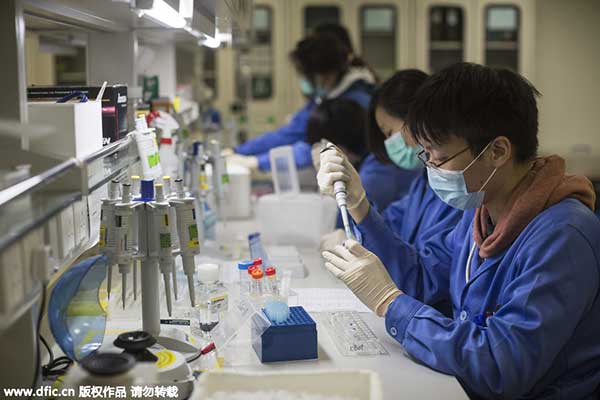Gene-editing technique offers hope to treat muscle disorder: studies
 |
|
[Photo/IC] |
Scientists have used a new gene-editing technique called CRISPR to treat an adult mouse model of Duchenne muscular dystrophy, marking the first time that such a tool has successfully treated a genetic disease inside a living mammal.
Duchenne muscular dystrophy is caused by problems with the body's ability to produce dystrophin, a long protein chain that is coded by a gene containing 79 protein-coding regions known as exons. If any one of the exons gets a debilitating mutation, the chain does not get built. Without dystrophin, muscle tends to shred and slowly deteriorate.
The disease affects one in 3,500 to 5,000 boys, according to the US Centers for Disease Control and Prevention and other estimates, and often leads to premature death by the early 30s.
Now, three independent studies, published in the Friday issue of US journal Science, showed that the recently developed gene-editing technique has the potential to treat those who suffer from Duchenne muscular dystrophy.
In the first study, researchers from the Duke University worked with a mouse model that has a debilitating mutation on one of the exons of the dystrophin gene.
They programmed the CRISPR system to snip out the dysfunctional exon, leaving the body's natural repair system to stitch the remaining gene back together to create a shortened -- but functional -- version of the gene.
With the help of a non-pathogenic carrier called adeno-associated virus 8 (AAV8), the team first delivered the therapy directly to a leg muscle in an adult mouse, resulting in the restoration of functional dystrophin and an increase in muscle strength.
















